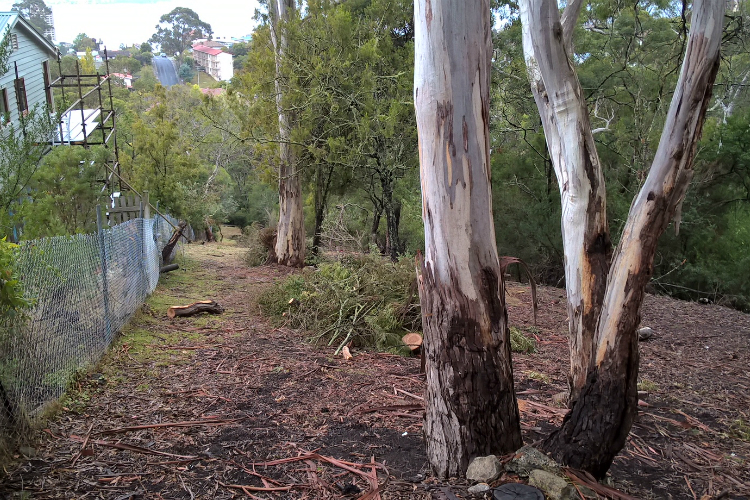Bushfire management

The City of Hobart is one of the most bushfire-prone cities in Australia. To lower the risk, we undertake planned burning and maintain a large network of fuel breaks and fire trails.
No reasonable management options exist that will ever fully eliminate the potential danger. Significant bushfires will almost certainly occur in the future. However, being prepared can substantially reduce the risk.
We manage Hobart's bushland reserves in a way that seeks to minimise bushfire risk to people, homes and infrastructure, while also protecting natural values.
We have developed a Bushfire Management Strategy. It outlines the bushfire threat to Hobart, and actions have that have and will be undertaken to reduce, to the extent possible, future bushfire-related risks:
Bushfire Management Strategy
Fuel reduction burns
Reducing the risk of destructive bushfire in Hobart's forests is an important part of preparing for the bushfire season. It helps protect people, property and our natural environment from bushfire.
The City of Hobart's key tool for reducing bushfire risk is our annual program of low-intensity fuel reduction burns. These allow us to effectively manage fuel loads within our reserves.
Please note: we make every effort to alert nearby residents to upcoming fuel reduction burns, but if you or a member of your household has health or breathing conditions that could be made worse by smoke, please contact us.
We also encourage you to subscribe to our burn alerts email list. We use this list to let you know when we plan to carry out a fuel reduction burn in Hobart.
All of our burns are registered with the Tasmania Fire Service and can be viewed on the What's Burning Now page.
Safety advice during burns
During fuel reduction burns we close the surrounding area to the public for safety reasons. Please do not proceed past any track closure signs until the site has been reopened.
You may notice smoke or smouldering logs for several days after a fuel reduction burn. Please do not be alarmed, this is expected.
Our staff will patrol the area for several days to ensure the fire does not reignite.
However, if concerned, please contact us.
- We only burn when wind and temperature conditions are suitable. Ground fuels such as grass and leaf litter also need to be sufficiently dry.
- Signs are displayed in bushland reserves scheduled for planned burns. People living near targeted areas are notified in advance.
- Some walking and cycling tracks may need to be closed during fuel reduction burns. They will be re-opened when the area is safe.
- Please follow all safety directions and remain clear of fuel reduction burns. There is a heightened risk of trees and branches falling during and immediately following such operations.
- We advise nearby residents to take appropriate precautions during burns. This includes keeping doors and windows closed, removing washing from clothes lines, and making sure pets are in a protected area.
- Motorists should always slow down and take care if driving through smoke. Keep your windows up and turn on your headlights.
Fuel breaks network

We manage a network of 'green' fuel breaks between bushland reserves and people's homes. This is to help protect life and property from destructive bushfire.
A fuel break is an open strip of land where the vegetation is modified to reduce the rate of spread and intensity of fire. Fuel breaks reduce the impact of radiant heat on nearby houses, and allow fire fighters to get in close to a fire front.
Some canopy trees are kept within fuel breaks. If there is a bushfire they disrupt wind flow and capture fire embers before they reach nearby houses.
Ground cover is maintained as a 'marsupial lawn' to prevent soil erosion. Marsupials are highly cost-effective lawn mowers!
For fuel breaks to be effective, property owners living adjacent to bushland reserves need to tidy up gardens and vegetation on their property between the house and the bushland reserve boundary.
We maintain more than 100 fuel breaks across over 50 hectares of bushland reserves. Fuel breaks are maintained during the bushfire season.